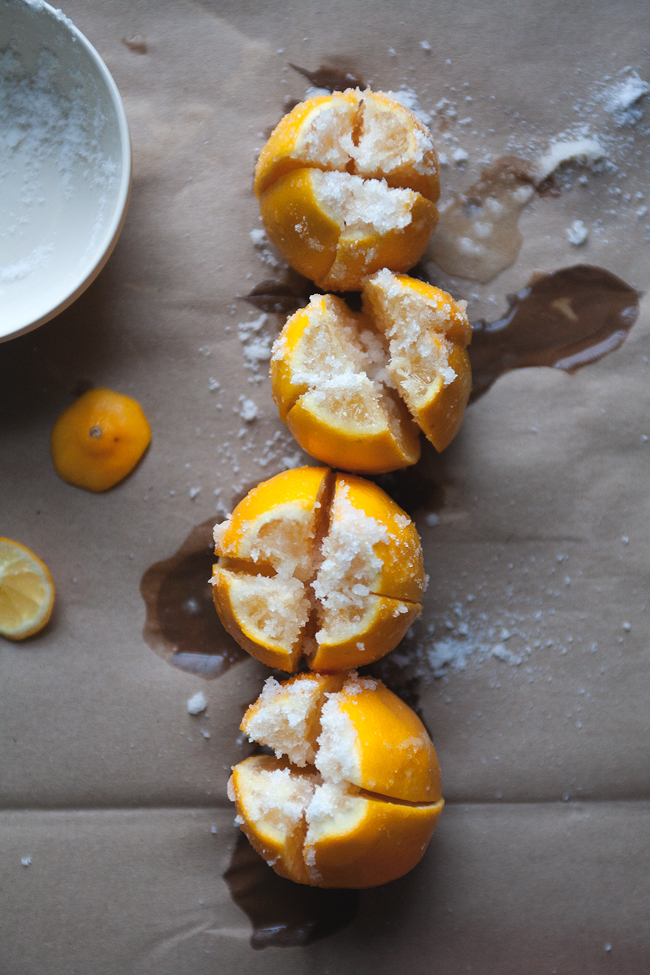I don’t have a recipe to share, just the beginnings of a process. While I’m mostly there in muscle work, the wait has just begun.
The story starts with ten Meyer lemons, four of which are present in the shots below. They were gifts from my sister, who gave them to me, freshly purchased from the farmer’s market, right before Chris and I left for the airport. The precious bundle became part of my check-in baggage, wedged carefully under the seat ahead of me much to the amusement of the passenger to my left. Clearly he didn’t realize they weren’t ordinary lemons.
For days, I contemplated what I would make, all the endless possibilities, but my mind had already made itself up. It was going to be preserved lemons. I’d been thinking about making my own for awhile, but my hangup has always been the fact that the jar would be sitting on the counter at room temperature for days. Doesn’t botulism develop under such conditions?
But how exactly does botulism develop in a jarful of acid and salt? Reason conquered dramatics. Plus, I sterilized my jar.
So, without further ado, a free form how-to on making preserved lemons, gleaned from multiple sources (but I like the pictures here the best.)

You start with a sterilized jar (I’m not sure how necessary this step is, but do it just to be safe) and however many of these babies you think will fit in it snugly. (I ended up misjudging, thinking I could fit four lemons in a 12-oz. mason jar when it only fit three. But my lemons were huge.) Make sure to scrub them very very well, because the peel is what you’ll be eating.

Chop off the tops, then slice each lemon into four segments…

… stopping a little short of the end so that they’re still attached.

Then, using non-iodized salt (iodized imparts an unpleasant taste), stuff each lemon with about 1 Tbsp of salt. Rub the salt all over (but watch those tiny paper cuts and hangnails as they will sting!), jam it in.

Cover the bottom of the jar with a layer of salt, and then squelch a lemon in. Push it in hard, so that the juices squirt out.

Between lemons, add more salt, and spices if you decide to use them (some choices include whole black peppercorns, cinnamon sticks, dried bay leaves, cloves, coriander seeds). I would spice sparingly.

In the end, I managed to fit three lemons in the jar very snugly. (I considered preparing a second jar, since I’d already prepared a fourth lemon, but in case the jarring doesn’t go well, I’d like to have lemons left over to make other delicious things with.) And they were very juicy, so I was able to cover the lemons with the juice. If the wedges are not covered, squeeze in more juice until it covers the wedges. Make sure there’s some air space left behind (I’m afraid my jar is too full, but let’s see, shall we?).

Screw on the lid, and you’re done!
Now, The Wait. Leave the jar on the counter for the next few days, giving it a shake every now and then to distribute the salt and juices. Transfer the jar to the fridge and let it sit another month or so. Give it a shake every now and then.
Alright, in true journalistic fashion (this is very serious reportage here), I’ll report on the progress of my preserved lemons every week or so and give you guys an update. (This is kind of like a reality show, isn’t it?) And when they’re finally ready… well, those tantalizing thoughts are best buried in the back of the mind, but I’ll be featuring recipes here, that’s for sure!


